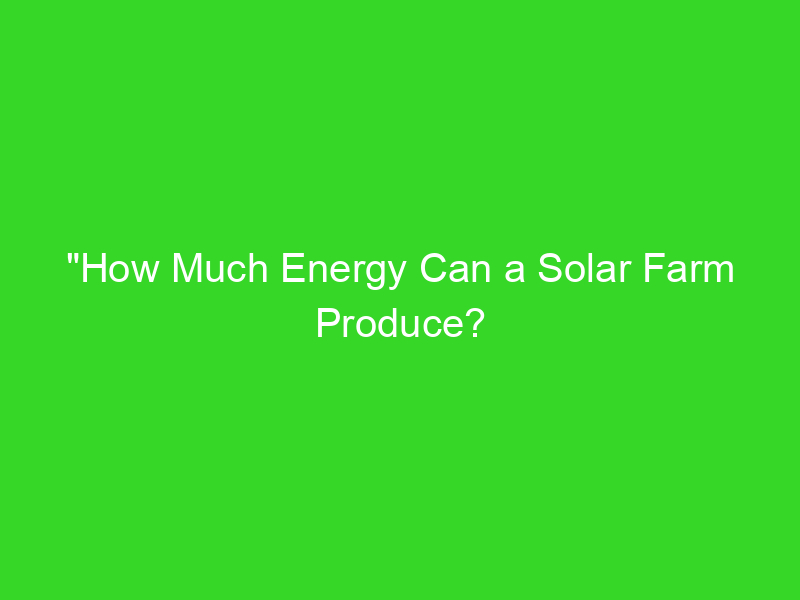
How Much Energy Does a Solar Farm Produce?
Solar energy is a popular source of renewable energy, and solar farms are becoming increasingly common. But how much energy does a solar farm actually produce? In this article, we'll explore the factors that affect solar farm energy production and give you an idea of what to expect from a typical solar farm.
Factors Affecting Solar Farm Energy Production
There are several factors that affect the amount of energy a solar farm can produce. These include:
Size of the Solar Farm
The larger the solar farm, the more energy it can produce. Solar farms range in size from a few acres to hundreds of acres, with the largest solar farm in the world covering over 13 square miles.
Location
The location of a solar farm is also important. Solar panels generate the most energy when they receive maximum sunlight, so regions with high levels of solar radiation are better suited for solar farms. The latitude and altitude of the site, as well as any shading caused by nearby structures or natural features, can also affect energy production.
Type of Solar Panels
The type of solar panels used in a solar farm can also impact energy production. There are two main types of solar panels: monocrystalline and polycrystalline. Monocrystalline panels are more efficient and can generate more energy per square foot, but they are also more expensive. Polycrystalline panels are less efficient but more affordable.
Orientation and Tilt
The orientation and tilt of solar panels can also affect energy production. Solar panels are most effective when they are facing directly towards the sun at a 90-degree angle. A tilt of 20-30 degrees is optimal for most solar panels, but this can vary depending on the latitude of the site.
Weather Conditions
The weather can also impact solar farm energy production. Cloudy or overcast days can reduce energy production, while hot temperatures can cause solar panels to be less efficient. However, some solar panels are designed to work in low-light conditions, which can help offset any loss of energy production on cloudy days.
Typical Solar Farm Energy Production
So, how much energy can a typical solar farm produce? The answer depends on a variety of factors, but on average, a solar farm can generate between 1 and 2.5 megawatts per acre. This means that a 100-acre solar farm could generate between 100 and 250 megawatts of energy.
To put this into perspective, a typical coal-fired power plant can generate around 600 megawatts of power, while a nuclear power plant can generate up to 1,000 megawatts. However, solar farms have several advantages over traditional power plants, including a lower environmental impact, lower operating costs, and the ability to generate power during daylight hours without the need for fuel.
Conclusion
In conclusion, the amount of energy a solar farm can produce depends on several factors, including the size of the solar farm, its location, the type of solar panels used, and the weather conditions. On average, a solar farm can generate between 1 and 2.5 megawatts per acre, which means that a 100-acre solar farm could generate between 100 and 250 megawatts of energy. While this may not be as much as a traditional power plant, solar farms have several advantages that make them a promising source of renewable energy.





